
 |
|
|
| by Lee Juvan |
|
When someone asks you what kind of spinning wheel you have (or lust after), you might answer with a brand name (oooh! Schacht-Reeves) or a style (Saxony or castle). More generically, wheels are described by how they work mechanically: spindle wheels and flyer (also called flyer-and-bobbin) wheels. Modern spinners are most familiar with flyer wheels because they dominate the current wheel market. But flyer wheels are younger than their driven-spindle cousins. For millennia, the hand spindle ruled across the globe, and when the first spinning wheels appeared (some say in India, others argue for China), they were based on the spindle (see Patricia Baines’s Spinning Wheels, Spinners, and Spinning for a lovely historical tour). |
|
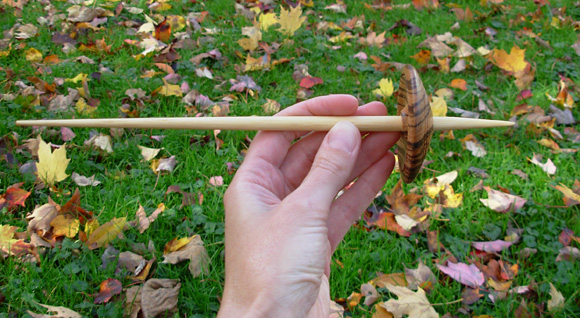
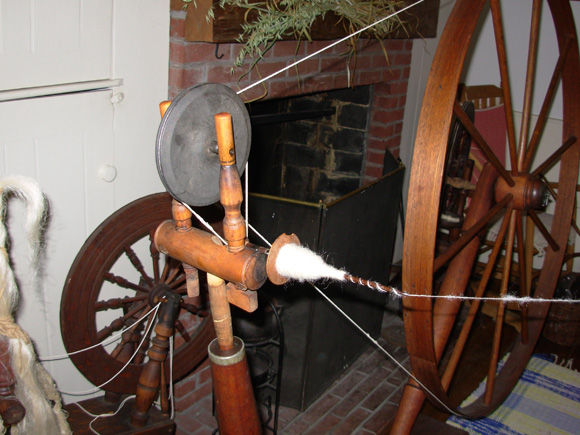
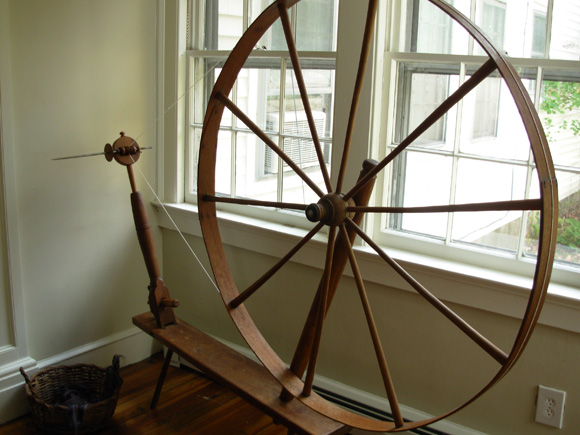 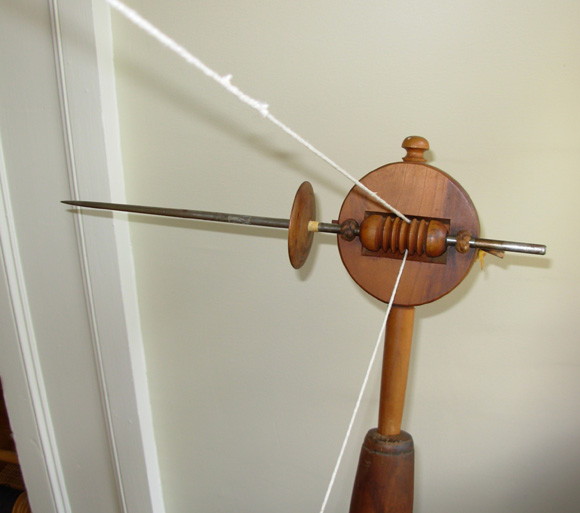  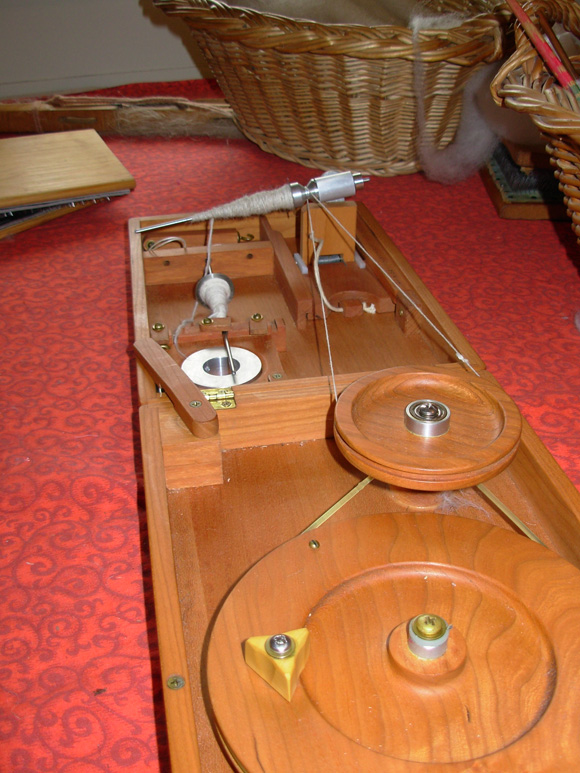
(The unique Rio Grande wheel has a spindle but allows continuous and two-handed spinning, so I’m not including it as an example here.) Florence Feldman-Wood, editor of the Spinning Wheel Sleuth newsletter, has other interesting images of early spindle wheels here. In general, spindle wheels tend to have high ratios, which make them great for producing high-twist singles, especially from short-stapled fibers such as fine wools and cotton. Spindle wheels are not as efficient for plying. For those who needed to spin out of necessity rather than for leisure, all that stopping to wind on must have seemed like a significant disadvantage, and the flyer wheel was born out of the need for a machine that would allow continuous spinning. As with much of the history of everyday life, the exact locations and dates of what were probably simultaneous developments have been lost, but most sources agree that flyer wheels were known in Europe by the fifteenth century. The spindle of the earlier spindle wheel became the shaft that holds the bobbin with a U-shaped flyer rotating around it. 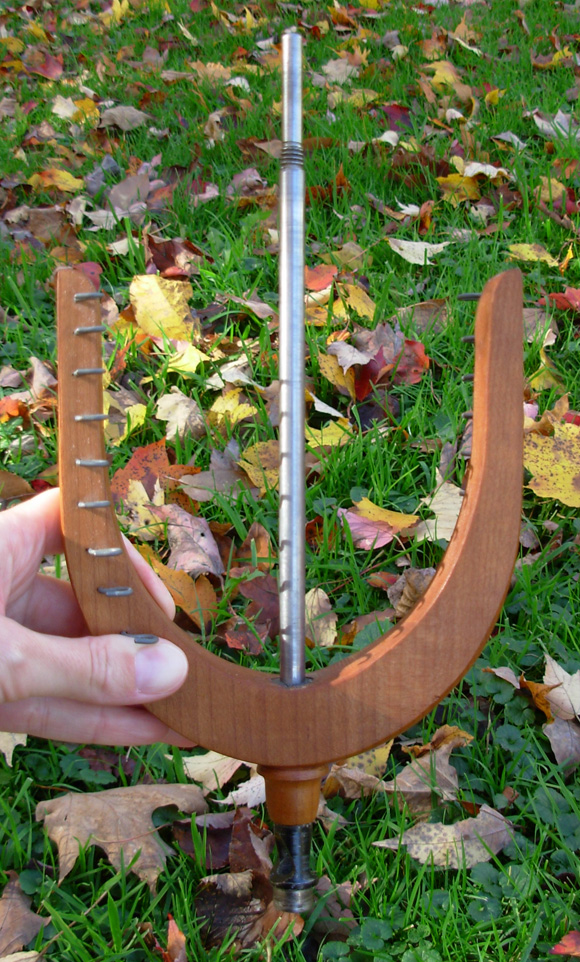
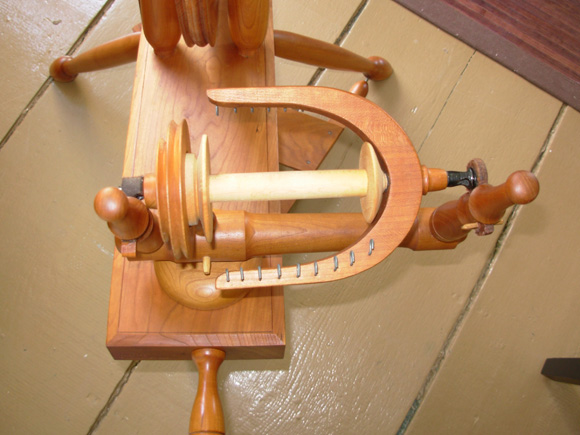
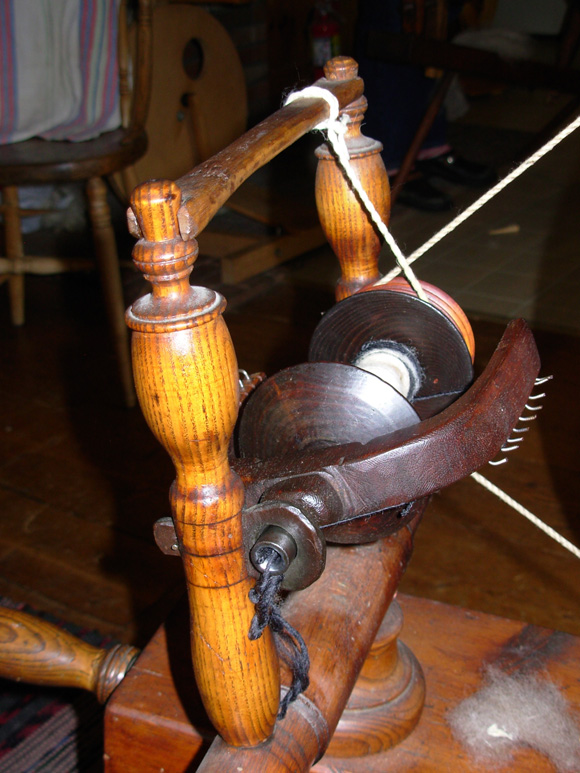 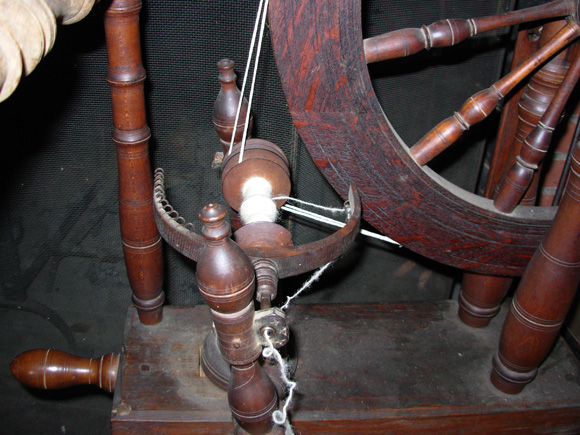
If you’re the kind of spinner who loves to read about the history of spinning wheels and tools, you’ll enjoy A Book of Spinning Wheels by Joan Whittaker Cummer and A Pictorial Guide to American Spinning Wheels by D. Pennington and M. Tyler. Both books have lots of photos of a great variety of antique wheels—both spindle and flyer—including some very unusual pendulum and double-flyer wheels. In the next Spinner’s Glossary, we’ll take a look at the categories of flyer wheels, which are based on the drive and tensioning systems. Stay tuned! |
| ABOUT THE AUTHOR |
 You can see more of her work on Ravelry and in Yarn Bombing: The Art of Crochet and Knit Graffiti by Mandy Moore and Leanne Prain. |
| Text © 2010 Lee Juvan; Images © 2011 Lee and Tom Juvan. Contact Lee |